Materials that matter: Materra
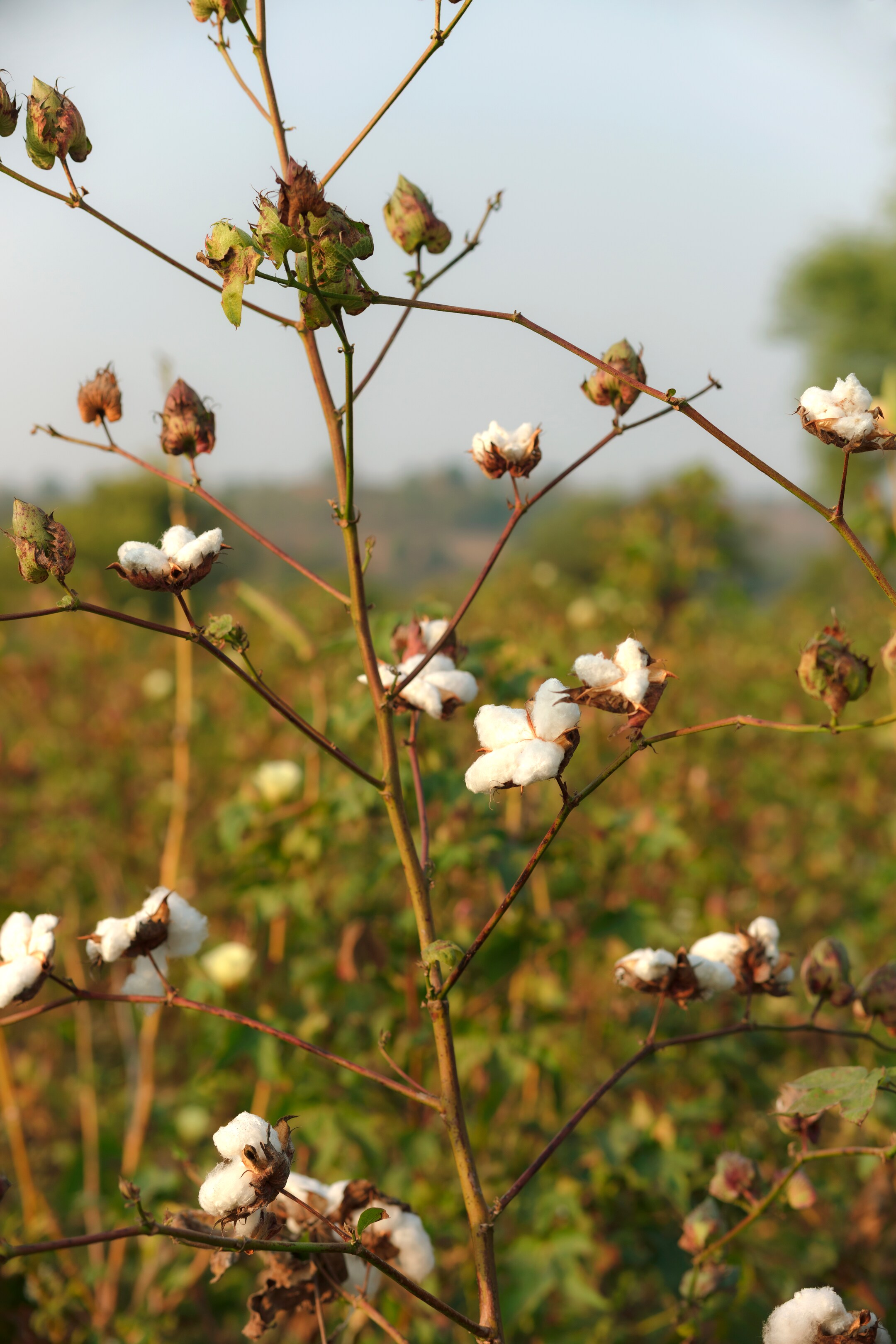
CLOCKWISE FROM LEFT: RAJESHKUMAR BHURABHAI PARGI, DILIPSINH RAJUJI THAKOR, VISHAL SENDHAJI RATHOD, FARM ASSOCIATES AND EDWARD HILL, MATERRA CO-FOUNDER (IMAGE: DHRUVIN).
As COS invests in the pioneering technology company Materra, its co-founders talk us through their ground-breaking innovation: greenhouse-grown cotton.
A proactive approach that mirrors best practice, embracing the complexities of a transparent supply chain, more engagement with what is happening in the field: Materra CEO Edward Brial is relaying what action he’d like to see the fashion industry take when sourcing materials and he should know: the climate-resilient cotton farming outfit he co-founded alongside fellow Imperial College alumni Edward Hill and John Bertolaso in 2018 is walking the walk.
Pioneering growing cotton in climate-controlled greenhouse environments is Materra’s MO. Producing up to four times more yield per surface area compared to conventional outdoor cotton farming; using up to 80% less water and no pesticides; and boasting around 30% carbon dioxide reduction compared to chemically intensive cotton farming, it’s no surprise that their pilot schemes are carving a different path for how to produce cotton sustainably and in a scalable way, in addition to helping farmers future-proof their farms without harming the planet.
‘IT’S REALLY TIME TO START LOOKING AT THE FIBER DIFFERENTLY AND START VALUING IT DIFFERENTLY’ – JOHN BERTOLASO
It’s a venture made possible by the trio’s impressive pooled knowledge. With studies in mechanical engineering and science under their belts and post-graduate experience in helping start-ups scale their businesses in the clean-tech space (including turning agricultural waste into bioplastics, insect farming for protein for human consumption and behavioral-change design in public health), they started their operations rather unconventionally in a greenhouse in Essex, England, before relocating to Gujarat in India in 2021.
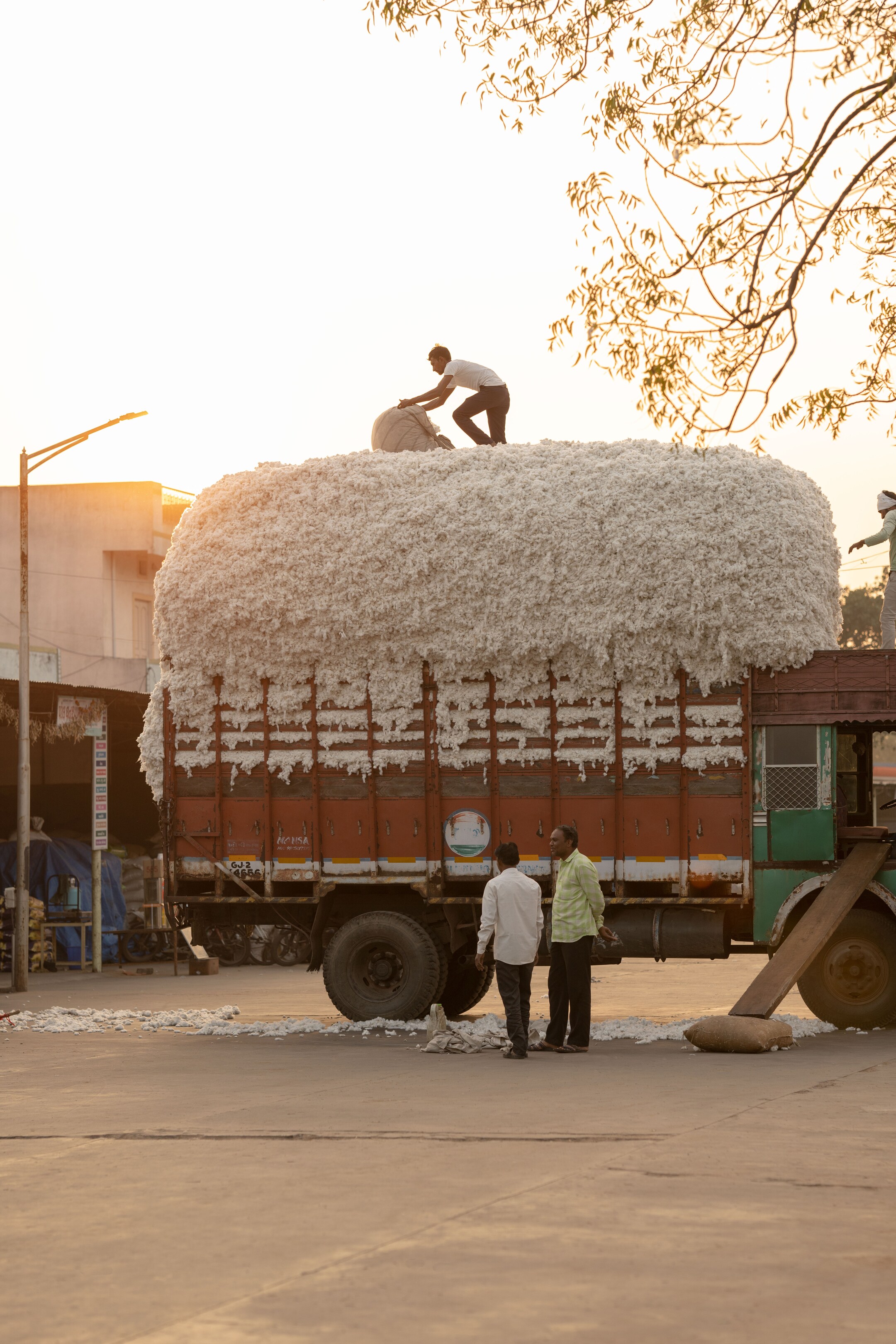
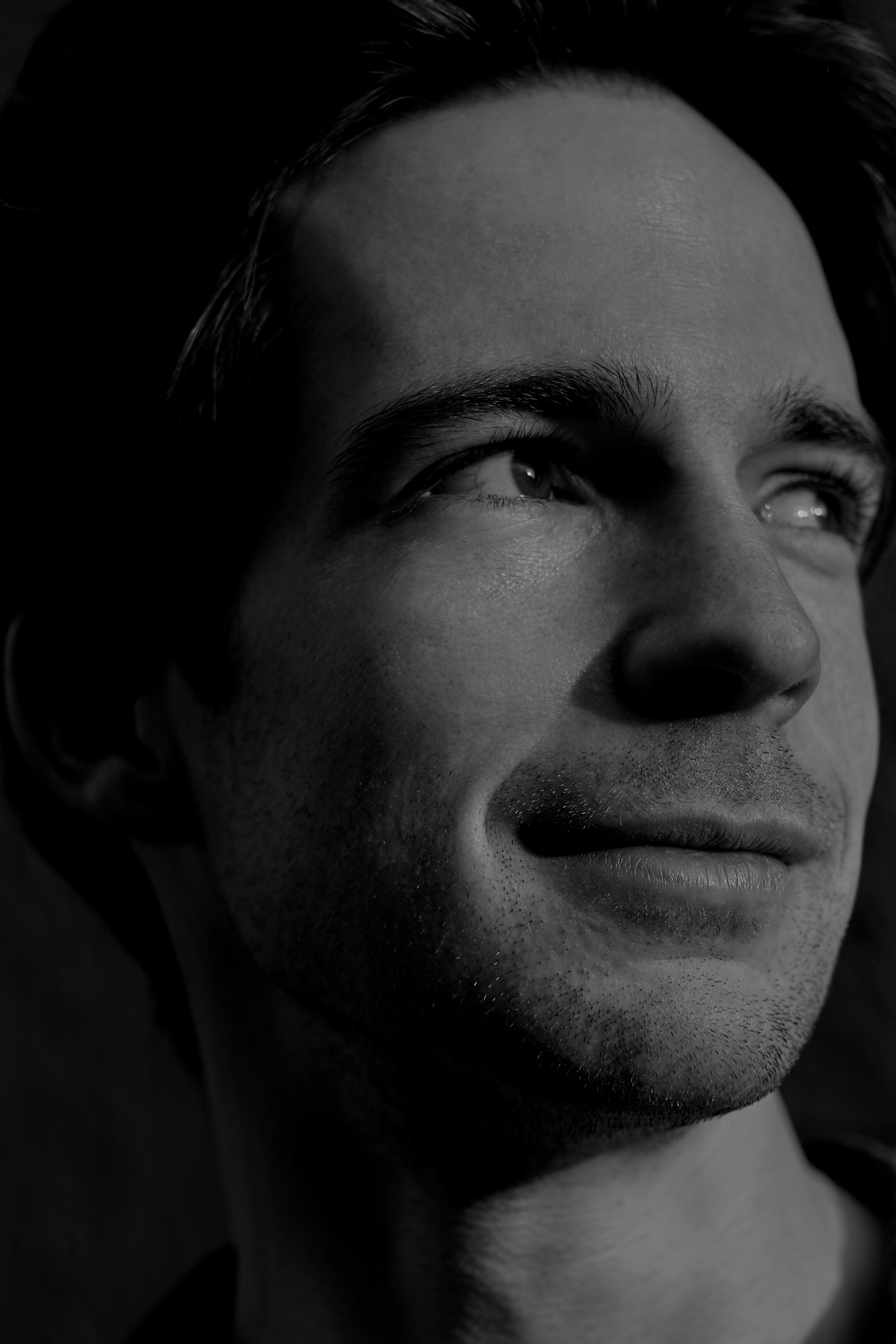
Edward Brial, Materra co-founder (Image: Ekua King).

Edward Brial, Materra co-founder (Image: Ekua King)
Comparing their model to ‘having stabilizers on a bike’, it allows them to ‘guide the crop in the direction we want daily such as exactly what food and temperatures it needs depending on its maturity.’ The end goal? Scalable, sustainable, and beautifully soft cotton that supports people and the planet. ‘We’re starting from the ground up so that’s a massive opportunity to rewrite the ways in which things have been done,’ says Brial.
It’s something that resonated particularly well with COS, whose belief in investing in the now to design for the future led them to securing Materra’s first-ever yield, and the creation of five prototype T-shirts which will be scaled up, alongside their investment, in 2021. As we gear up for this exciting partnership, we caught up with the co-founders to talk cutting-edge cotton farming, the importance of the local community and working with COS.
ON THE LIGHTBULB MOMENT
Edward Brial: ‘When we looked at a sustainable transition in agriculture – which contributes a quarter of the world’s green-house gas emissions, is one of the largest drawers of freshwater and where, when it comes to cotton farming, 9 out of 10 farmers are smallholders – it became clear that working within that space was a critical area for impact.’farmers are smallholders – it became clear that working within that space was a critical area for impact.’
‘We started having conversations about how a lot of tech implementation had [historically] focused on full-automation and importing certain farming solutions rather than working with what is contextually suitable. For example, parts need to be driven from local supply chains, because if something breaks, you can’t import Swiss hardware at your beck and call. We believe that we should be looking at augmenting farmers, not trying to replace them.’
‘One thing that was very critical was making sure that the fashion industry would care. We knocked on as many doors as possible, and that’s when we started talking to COS and verifying that the industry does need a more diverse supply of sustainable materials.’
ON THE ADVANTAGES OF GREENHOUSE-GROWN COTTON
Edward Hill: ‘One of the main advantages we have growing cotton in a protective environment is that we have a lot more control than a traditional farm. When you’re growing outdoors, you’re totally reliant on the weather; a protective environment can’t make the sun come out when it isn’t there, but it definitely allows us to give water when we want and control the humidity and temperature. For example, in a covered environment, seasons almost become optional which then makes you question the possibilities. Monsoons, for example, traditionally soften the soil to enable plowing or planting, but if you weren’t relying on a monsoon, would there be a more optimal time?’
‘Our process has been about discovery; cotton has never been grown under a greenhouse before unlike things like salad crops where there is a lot of literature. Cotton has traditionally been grown outdoors so there are changes that happen to the crop that wouldn’t be obvious. We have to figure out how we work with those changes to get to the point we want and explore what we can control and what can we do with it.’
ON WORKING WITH LOCAL COMMUNITIES
Edward Brial: ‘This year we set up our first industrial pilot in Gujarat, one of the largest cotton-growing states in India. India is, of course, the largest cotton-growing country in the world, so it has a lot of agricultural knowledge and culture centered around it. It’s also emblematic of an area that is very chemical intensive – on all the surrounding fields outside of the land we are working on, you can see open-field pesticide use, flood irrigation etcetera.’
‘Our farms are quite different – they are controlled environments, and they are designated on depleted or degraded land. We’ve set up our pilot in a corner of the site which has basically been a flood basin and is a sandpit that hasn’t grown anything for the past 10 years, so it’s resetting that area of land and working hand in hand with our team.’
‘We are really fortunate to have the partners that we do on the ground. We’ve brought on cotton farmers on retainer and our farm manager has run organic indigo and fruit projects before. They all have a lot of embodied knowledge of cotton farming but they’re normal cotton farmers, so working with them will ultimately be the best way we can make sure our solutions work within their eco-systems.’
Ed Hill: ‘From the plant science side, we are working with two amazing doctors in India, one of them has extensive experience within Gujarat and is an expert in plant science and cotton breeding. The other is a specialist in integrated pesticide management – the use of biological pest control or natural spray. Trying to totally avoid using any pesticides, we’re leaning in heavily on their experience of the region. But the fun really is being in the field, while there are sensors we use, a lot of it is based on observational science which is how a lot of typical trials are run.’
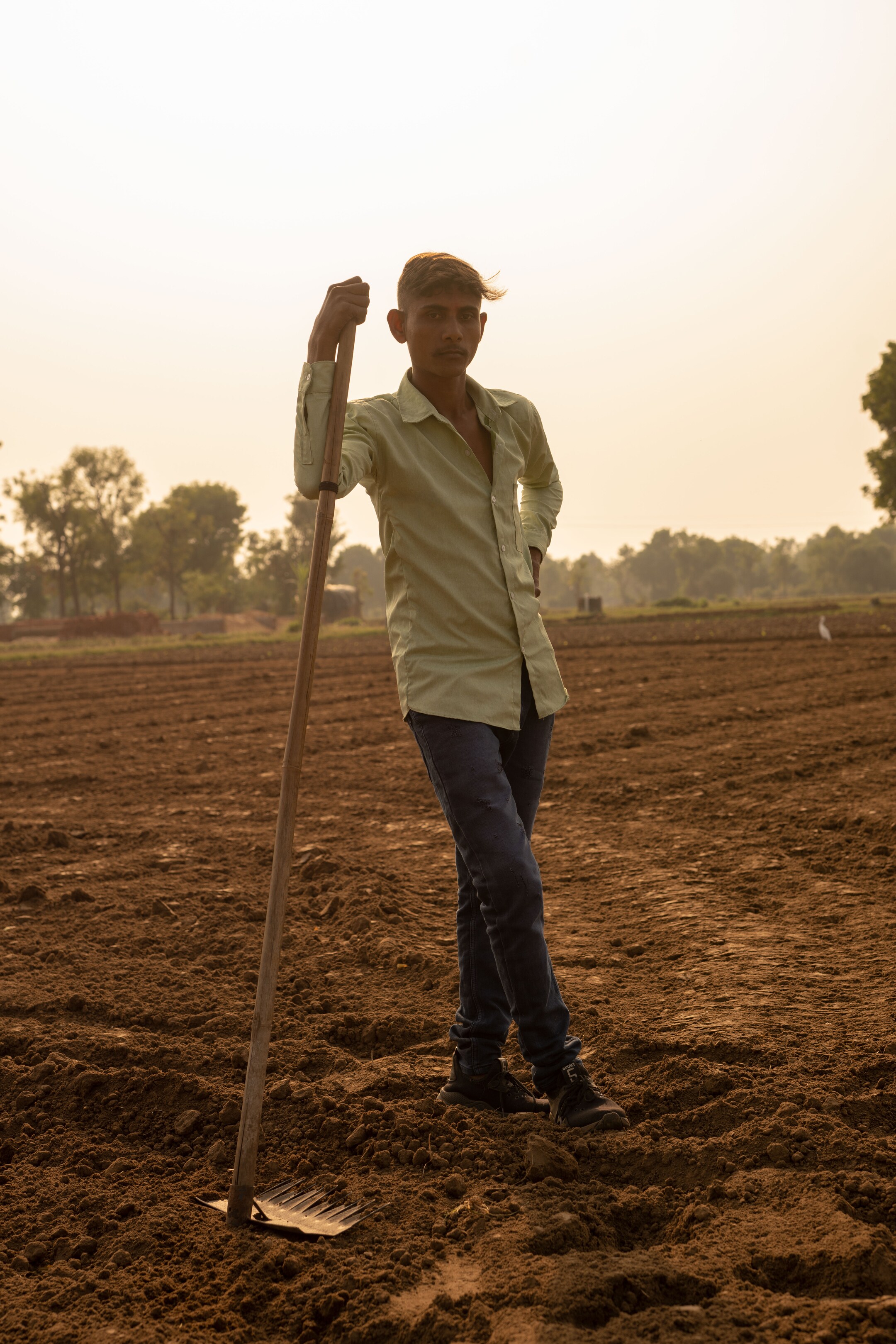
Surendra Sendhaji Rathod, farm associate (Image: Dhruvin).
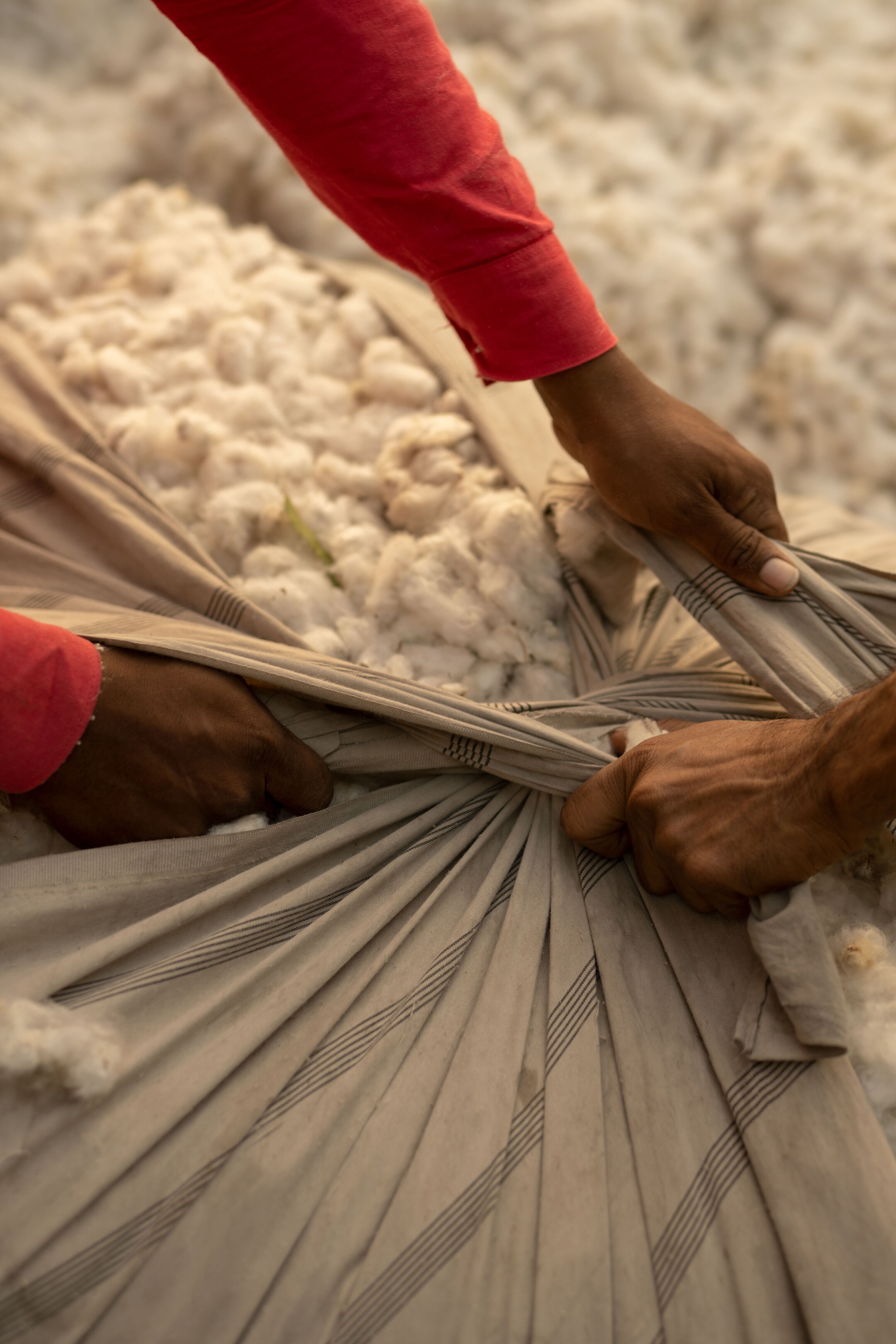

John Bertolaso: ‘We are also developing a support system for the farmers with a series of tools that use artificial intelligence and machine vision to better predict certain issues that may arise in the field when it comes to pest infestations or challenges to the cycle because of environmental factors to support the farmers in decision making.’
ON RE-EVALUATING COTTON
John Bertolaso: ‘It’s really important to keep the economics in mind, because cotton has historically been massively undervalued. It’s really time to start looking at the fibre differently and start valuing it differently. This is a battle we have to always fight, because cotton is never seen as a particularly valuable crop, but it probably will be as it becomes harder to grow in the future, due to climate change.’
‘BEING ABLE TO WORK WITH THE TOP OF THE SUPPLY CHAIN IS REALLY CRITICAL BECAUSE IT CAN SHOW THAT THERE IS AN UPFRONT DEMAND FOR THE COTTON THAT WE WILL BE WORKING WITH FARMERS TO PRODUCE’ – EDWARD BRIAL
Edward Hill: ‘We changed our name from Hydrocotton to Materra because of the way we want to expand in the future, but also with the view to becoming a consumer-facing brand. It’s a real issue right now – if you ask anyone in the street what brand of cotton [they are wearing] they have no idea – it’s just “cotton” – one word for a whole industry. We wanted to have a name that would be more accessible to consumers so that in 10 years or whenever it may be, they can ask for our name. I think that will become important for material producers in general. ‘
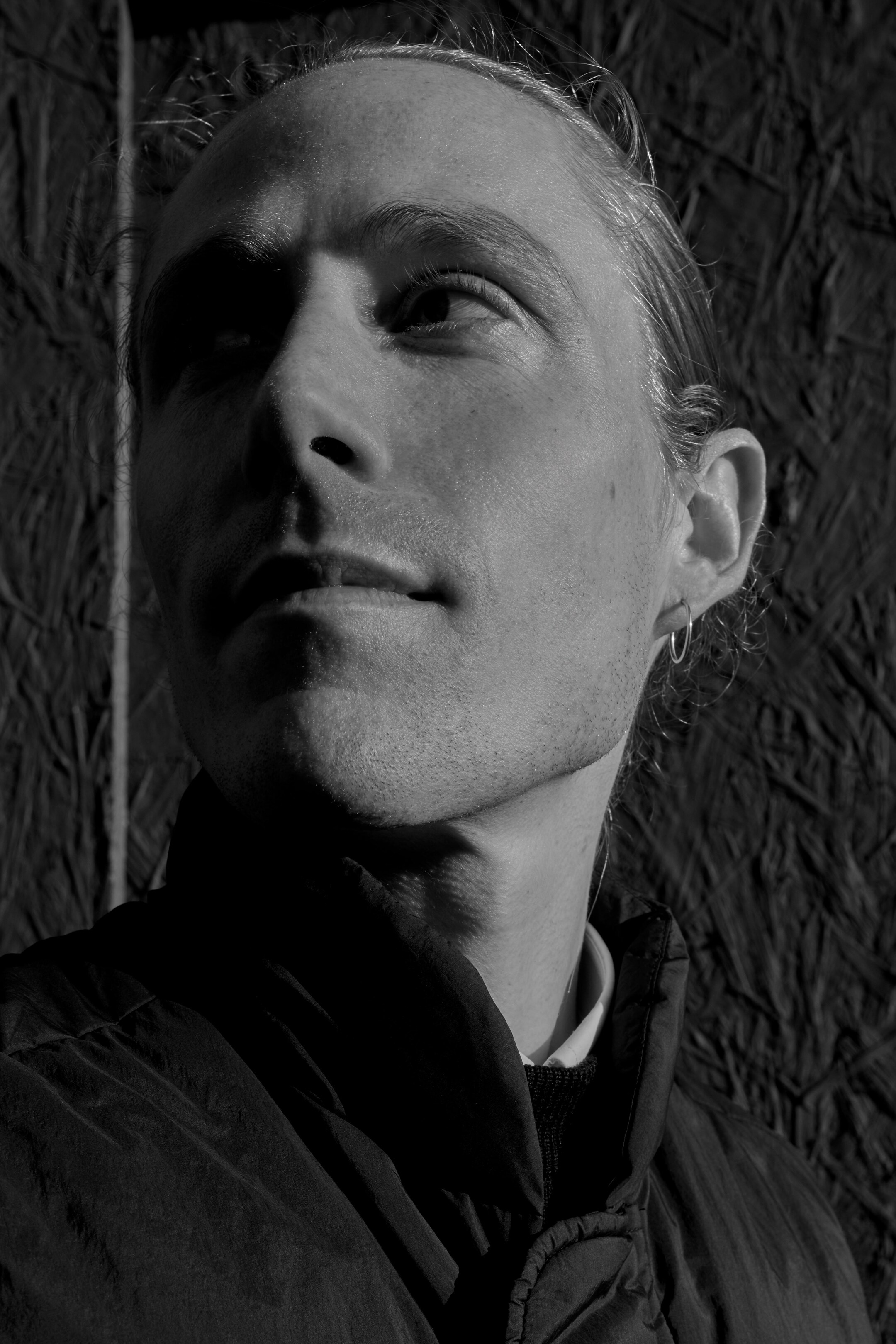
John Bertolaso, Materra co-founder (Image: Ekua King).
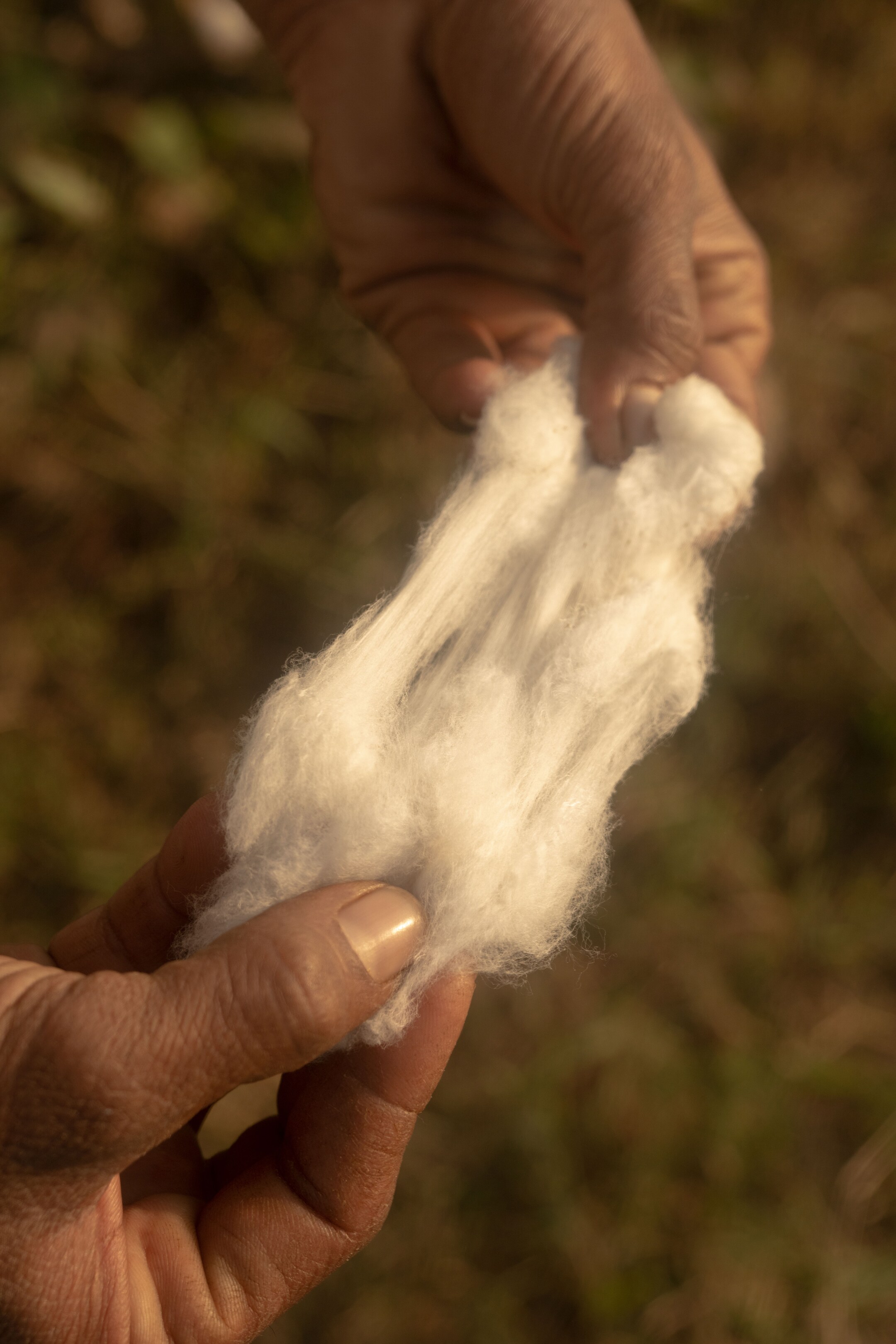

ON WORKING WITH COS
Edward Brial: ‘Being able to work with the top of the supply chain is really critical because it can show that there is an upfront demand for the cotton that we will be working with farmers to produce. This will change our economic model, in being able to anticipate demand and that’s going to be a critical change in mindset and a part of our journey in scaling up to the fashion industry in a responsible way. When you work with a brand like COS that has a voice, it can definitely set a precedent for the rest of the industry.’
Ed Hill: ‘COS was one of the first brands we reached out to. Its positioning on the high street is very interesting to us because it is accessible to multiple demographics – some sustainable products can end up being very expensive or quite faddy and something that attracted us to COS is that they have more longevity behind their products but also their price point is accessible, and those two things are very important.’
ON THE FUTURE OF THE FASHION INDUSTRY
John Bertolaso: ‘We’ve talked about the concept of net-positive fashion and I’d like to see a fashion industry that is more in balance with people and the planet; an industry that better nurtures the ecosystems that it relies on, rather than defeating them; and values but the communities that are a part of it. That can manifest in lots of ways, but three things I would like to see from the fashion industry is a paradigm shift in how business is done today to promote circularity and transparency, a shift in how we perceive materials and waste, and then rapid collective action to change our relationship to raw materials and the natural world.’
Ed Hill: ‘Some brands can be very guilty of selling newness and not necessarily selling garments that you buy, love and want to wear for years and years. Fashion has moved away from selling things that wear great, to selling new experiences and I think a fashion industry that can go back to selling amazing clothes that are circular, transparent and made by amazing people is a really solid embodiment of what we want to see in the future.’
Edward Brial: ‘We need to be redefining how businesses essentially become prosperous without destroying the environment and people. It's a justice issue – you’re not going to encourage farmers to be more sustainable if you don’t invest in them. This ties back to the fashion industry that has to see itself, at least from a cotton perspective, as a part of the agricultural supply chain. That is a reality that should be more broadly understood and accepted.’
WORDS BY SCARLETT CONLON
PHOTOGRAPHY BY DHRUVIN AND EKUA KING